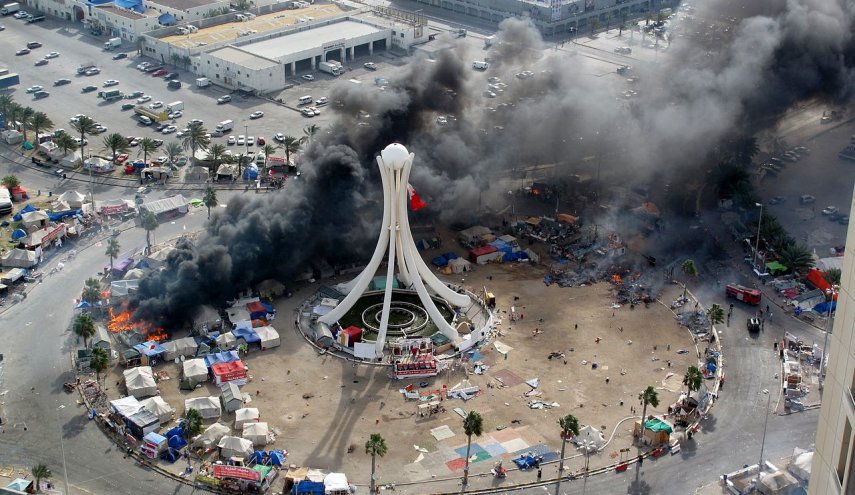“After 13 years since the bloody Thursday massacre in Bahrain, the painful anniversary still reflects the gap between the regime and the people.”
“At 3:00 AM on February 17, 2011, a tragic event occurred in Bahrain, marking a dark day in the country’s history. This day is described as the ‘Bloody Thursday,’ during which a massacre took place resulting in the deaths of many innocent victims during a peaceful revolution. This event continues to leave a deep wound in the hearts of people and remains a stigma on the country’s governance history.”
“During the hours of darkness, security forces infiltrated the gathering site at Pearl Roundabout and launched their treacherous attack, catching the protesters off guard as they slept deeply. Mercilessly, their tents were torn apart, and many fell under the weight of deadly weapons within just a few minutes.
Four of the martyrs sacrificed their lives as a salute to freedom. The first martyr, Ali Khudair, fell to a weapon prohibited internationally, his body torn by the shards of injustice. The second martyr, Mahmoud Abu Taki, was martyred under the same deadly weapon. Ali Al-Moumen received a fatal bullet that left him bleeding to death. In the final moments, a bullet pierced the head of martyr Issa Abdul Hussein near Salmaniya Hospital. Alongside these martyrs, over two hundred and fifty protesters were injured, including women, children, and elderly, torn apart by wounds bleeding tears of injustice and oppression.”

What does the Bloody Thursday massacre represent
“The report of the Bahraini Committee for Human Rights documented the horror of what happened on that fateful day, the ‘Bloody Thursday,’ confirming the presence of a thousand security personnel involved in the brutal attack. Despite the international outcry at the time, investigations were not conducted, and the perpetrators remained beyond the reach of justice, evading accountability.
Following the tragic incident, one of the leading religious figures in Bahrain, Ayatollah Sheikh Isa Qassim, delivered a historic speech carrying many lessons and directives.
To this day, the Bloody Thursday massacre in Bahrain remains a clear example of the gap between the authorities and the people, reflecting the impunity policy prevailing in the country.
The language of repression and tyranny, aimed at crushing the people’s demands, ironically played a role in strengthening and affirming those demands, according to statements from some citizens on the anniversary of the massacre.”
source: lualuatv


